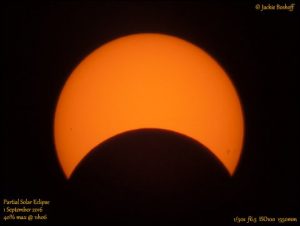
What will I see?
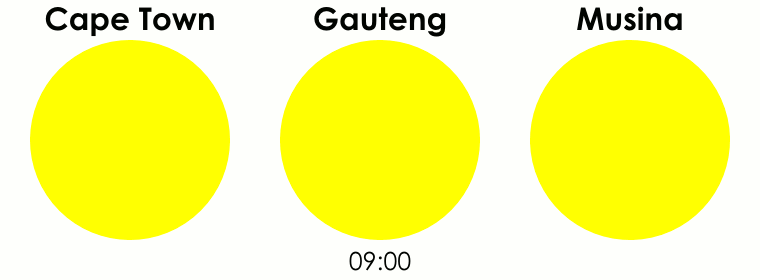
A solar eclipse is a rare opportunity to see the solar system in action.
For a short time, the Moon will pass between us and the Sun, and instead of seeing the Sun as a round disc, it will have a “bite” out of it. This “bite” is the Moon, and the size of the “bite” changes as the Moon slowly moves along.
From where can I see the eclipse?
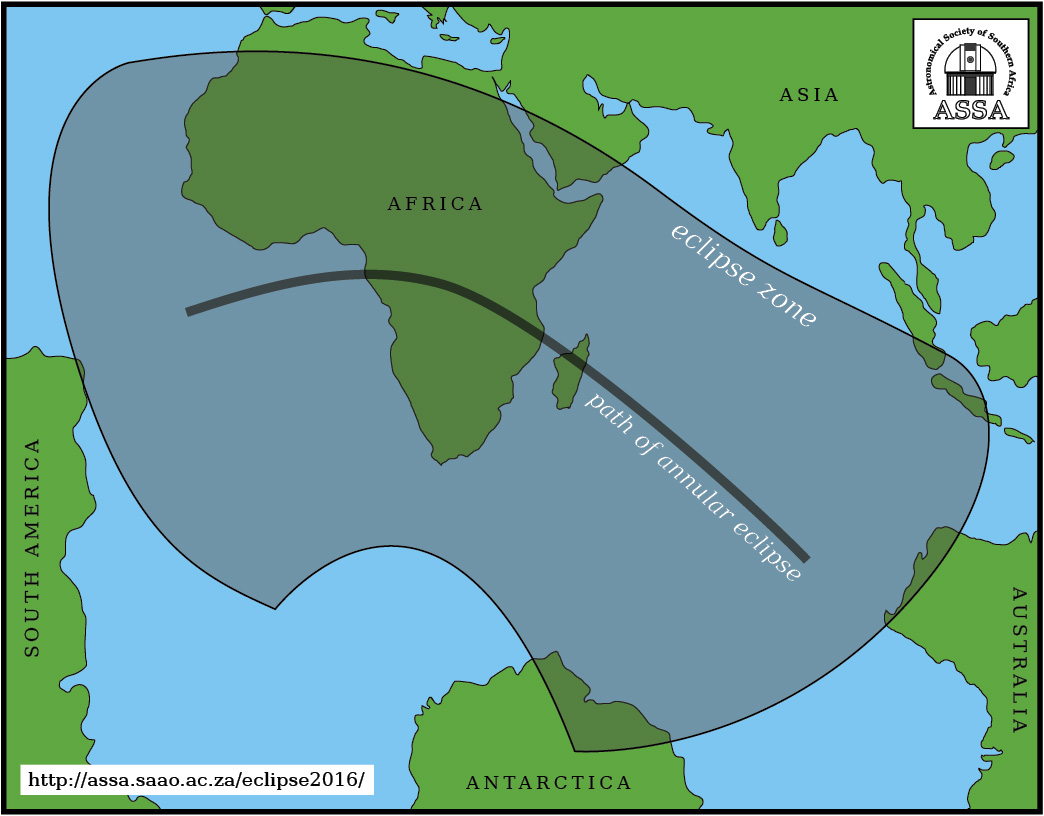
This eclipse is visible from almost anywhere in Africa! If you are anywhere within the shaded region shown on the map, you will see it. The closer you are to the thin darker “centre line”, the deeper and longer your eclipse. If you are lucky enough to be somewhere on the centre line, you will get to enjoy an annular “ring of fire” eclipse!
For more detailed predictions, visit the Moonshadow Mix website, which has precise calculations for 57 countries and regions.
When do I look?

The eclipse is on Thursday morning, 2016 September 01.
The Moon will take roughly two hours to move across the Sun, and the exact time when it is best to look depends on where on Earth you are. Roughly speaking, around 11:00 SAST is maximum eclipse. But it’s a lot of fun to watch as the eclipse progresses. At first, only a tiny bit of the Sun is eclipsed. Then, as the Moon moves along in its orbit, more of the Sun is covered. Depending on where in Africa you are, a greater or lesser proportion of the Sun will be covered. Eventually, the Moon moves away and the Sun is completey uncovered again.
The table below gives the start, maximum and end times of the eclipse, in local time, for selected places across Southern Africa. The last column gives the percentage of the Sun’s diameter that is obscured, at the time of maximum. For example, from Cape Town, the eclipse starts at 09:43 and ends at 11:58; at most (at 10:48 SAST) about a quarter (26%) of the Sun’s diameter will be blocked by the Moon.
| Location | Start | Maximum | End | Percentage |
| Antananarivo [SAST + 1hr] | 10:57 | 12:48 | 14:29 | 93 |
| Bloemfontein | 09:37 | 11:01 | 12:30 | 42 |
| Bulawayo [SAST] | 09:15 | 10: 54 | 12: 40 | 64 |
| Carnarvon | 09:37 | 10: 53 | 12: 14 | 34 |
| Cape Town | 09:43 | 10: 48 | 11: 58 | 26 |
| Durban | 09:48 | 11: 16 | 12: 46 | 45 |
| Gaborone [SAST] | 09:23 | 10:54 | 12: 31 | 51 |
| Harare [SAST] | 09:14 | 10:58 | 12: 47 | 72 |
| Johannesburg | 09:31 | 11:02 | 12: 38 | 50 |
| Lusaka [SAST] | 09:03 | 10:45 | 12:36 | 75 |
| Maputo [SAST] | 09:39 | 11:16 | 12:53 | 56 |
| Seychelles [SAST + 2hr] | 12:06 | 13:48 | 15:18 | 54 |
| Windhoek [SAST – 1hr] | 08:04 | 09:25 | 10:58 | 48 |
How do I look?
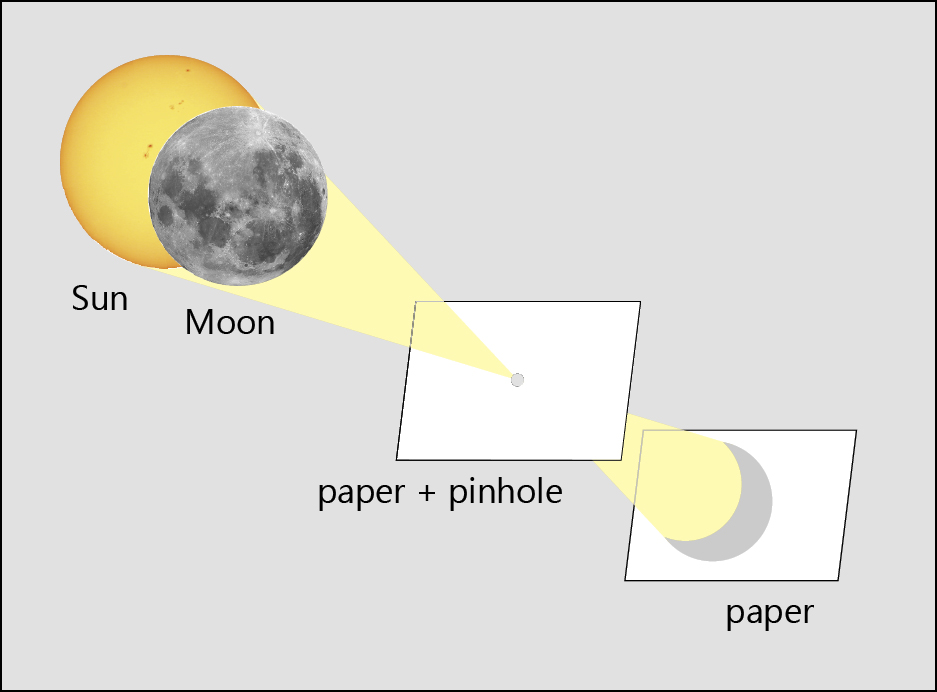
The easiest and safest way to follow the eclipse is to use pinhole-projection. All you need is a sharp pencil and two pieces of paper!
Another cool way is to put a piece of white paper on the ground underneath a tree – the gaps between the leaves will pinhole-project the Sun’s image!
More advanced ways of projecting the Sun are described on the “How To Observe The Sun” page.
To view the Sun directly, you need a special filter, such as that in eclipse glasses, to protect your eyes. More advanced methods, including using a telescope with a solar filter, are described on the “How To Observe The Sun” page.
If you’re stuck in a meeting, or if it is raining, you won’t see anything! If it is cloudy, you may still have a chance. But hopefully, the skies will be clear and the Sun will be shining brightly.
No matter what you’re doing, there will be a live YouTube feed from ASSA observers across the country so you can follow the action.
Can I take a Solar Eclipse Selfie?
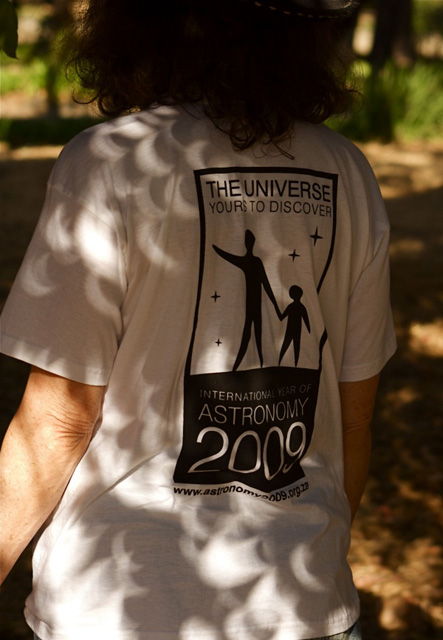
Yes, you can!
The safest, easiest and most interesting way to do this is to photograph the projected Sun.
Having writing on the surface you’re projecting on (e.g. sheet of paper, T-shirt) helps the camera to focus. And don’t forget to turn off the flash!
The accompanying photo by Simon Fishley, during the 2009 eclipse, is a good example because it was taken in the dark shade under a tree, so the pinhole-projected Sun is bright.
It’s not a good idea to point your camera directly at the Sun, even through eclipse viewers – you risk damaging your eyes aiming the camera, and the photos are generally tiny and disappointing.
For detailed advice check out our How to Photograph a Solar Eclipse page.
Sharing is Caring!
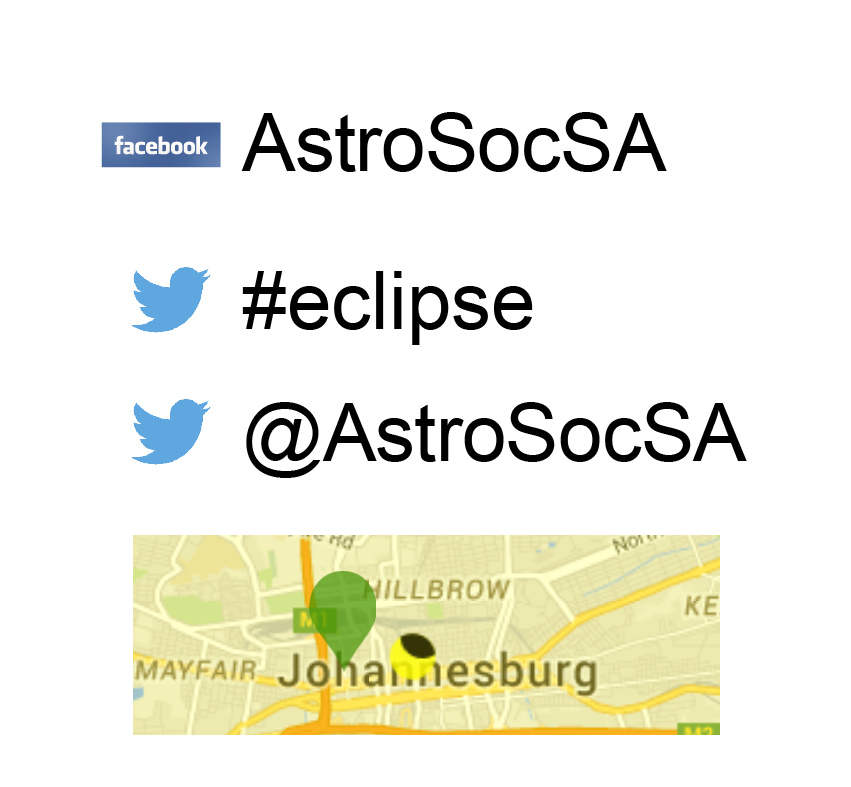
At EclipseAfrica: Find an eclipse viewing event near you (or register your own).
On Facebook: Share your photos on the ASSA facebook page [ https://www.facebook.com/Astrosocsa/ ].
On Twitter: Post your photo with the hashtag #eclipse and tag @AstroSocSA in your tweet.
Selected images will be featured in our live video feed and will be added to the ASSA image gallery.
Preparing for the eclipse

A few days before the eclipse, check that you’ve got everything you need. Do a test run by projecting the Sun and see that you get a nice sharp round image. Now take some photos and experiment with different positions and settings.
Think about where you will be on the morning of the eclipse and if the venue is suitable (e.g. safe, accessible, clear view of the Sun, a suitable tree for pinhole projection, etc.). If possible, do a test run, too, with all the equipment and materials you’ll need.
What, exactly, is an eclipse?
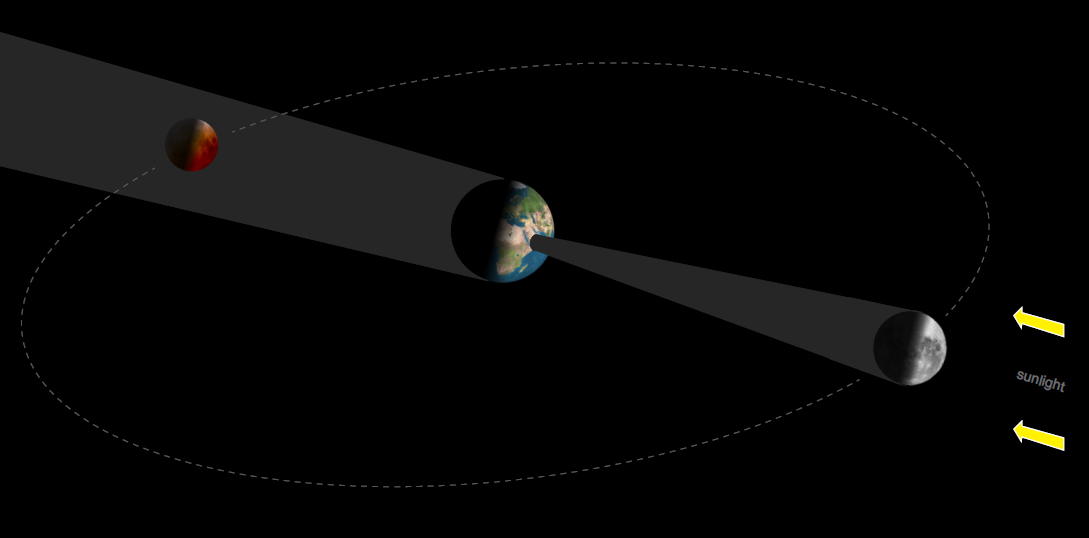
A solar eclipse occurs when the Moon blocks sunlight that normally falls on the Earth. (During a lunar eclipse, the Earth’s shadow falls on the Moon.) A solar eclipse can only occur at the time of New Moon. Because the plane of the Moon’s orbit is tilted slightly, in most months the Sun–Moon–Earth alignment is not exact and the Moon’s shadow misses the Earth. When the alignment is correct, the Sun is eclipsed! If the alignment is exact, then the eclipse is either total or annular (ring-shaped), depending on the distance to the Moon. If the alignment is good but not perfect, then a partial eclipse is seen.
In a calendar year, between four and seven eclipses (solar and lunar combined) can occur; at least two and at most five will be eclipses of the Sun. From any given location, there will be, on average, a partial eclipse every couple of years and a total solar eclipse once in 375 years.
The next total solar eclipse visible in southern Africa will be in 2030. The next partial solar eclipse visible from southern Africa is late in the afternoon of 2017 February 26.
The next lunar eclipse is on September 16 (from 18:54 to 22:54 SAST). However, the Moon only passes through the dim, outer portion of the Earth’s shadow, so it is likely to go un-noticed. Careful observation, perhaps with binoculars, could reveal the very slight darkening of the Moon.
Reports
The partial eclipse of the Sun on Thursday, September 01, 2016, was the only solar eclipse visible from southern Africa this year. In fact, it was visible from almost anywhere in Africa (except the very northernmost parts), and seen from central Africa and Madagascar it would be annular. This rare event was a wonderful opportunity to witness the solar system in action, as the Moon slid in front of the Sun. Using simple materials, the progress of the eclipse – which lasted more or less 2 hours – could be watched, shown to family and friends, and shared with the world.
